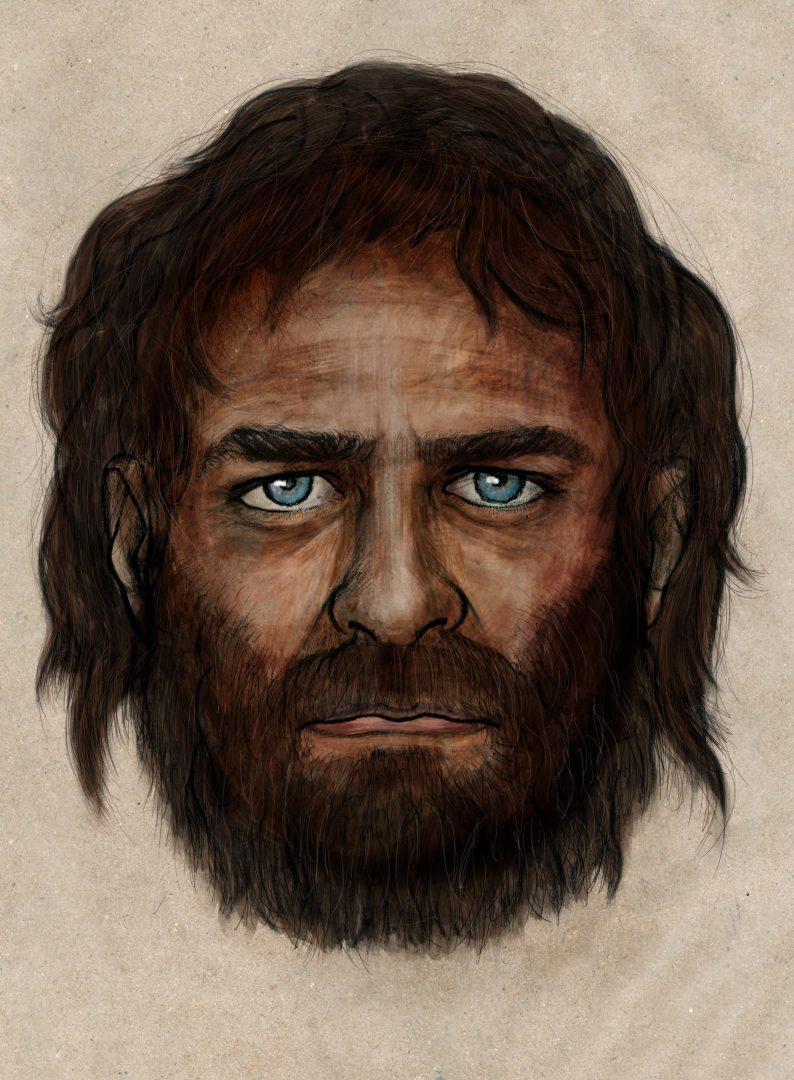7,000-year-old wisdom tooth reveals the appearance of the first Europeans
7,000-year-old wisdom tooth reveals the appearance of the first Europeans
Drawing of what the man could have looked like, based on the data recovered in his genes. (ileon.com/CC BY NC ND 3.0)
The popular picture of the light-skinned European hunter-gatherer is not accurate. DNA obtained from a 7,000-year-old wisdom tooth found in Spain in 2006 reveals another story. A study of this tooth demonstrates that the man who possessed it had dark hair, blue eyes, and also the dark-skinned genes of an African - although scientists do not know what the individual’s exact skin tone had been. The blue-eyed gene is among the most fascinating finds since it had been formerly thought to have been a later coming trait brought by farmers that entered the continent over 5,000 years ago.
The 2014 research was the first to examine a pre-agricultural European genome. It was directed by Inigo Olalde of the Institut de Biologia Evolutiva in Barcelona and published in the journal Nature – providing substantial insight into the look of modern people before farming arose in Europe.
The tooth came from the skeleton of a Mesolithic man who had been found at a Cantabrian cave near León in northwest Spain, in 2006. This man was discovered alongside the skeleton of another Mesolithic man. Both died intheir early 30s and their remains were well-preserved in the cave’s cool atmosphere. The age of the bones and other artifacts discovered at the site, for example reindeer teeth that had holes to string them on the men’s clothes, showed the researchersthat both of these men were hunter-gatherers.

Skeleton of one of the men found in the Spanish cave. ( J.M. Vidal Encina/www. ileon.com/CC BY NC ND 3.0 )
It took many attempts before the group of scientists were able to recreate the entire genome from the DNA of a wisdom tooth root. When they finally did, they were shocked. Dr. Carles Lalueza-Fox in the Institute of Evolutionary Biology in Barcelona explained the first of the intriguing discoveries made by the researchers:
“The biggest surprise was to discover that this individual possessed African versions of the genes that determine the light pigmentation of the current Europeans, which indicates that he had dark skin. You see a lot of reconstructions of these people hunting and gathering and they look like modern Europeans with light skin. You never see a reconstruction of a Mesolithic hunter-gatherer with dark skin”.

Skull of the skeleton from which the DNA has been examined. ( El Blog de “Acebedo” )
Observing that find, the scientists were amazed to find the man’s genes for blue eyes an unexpected trait since it had been formerly believed that blue eyes were a more recent development. The existence of genetic markers for blue eyes signifies the Mesolithic man is the earliest example of a European having blue eyes. Dr. Lalueza-Fox stated this result was more of a shock for the group compared to the Mesolithic man’s skin color, “Even more surprising was to find that he possessed the genetic variations that produce blue eyes in current Europeans, resulting in a unique phenotype in a genome that is otherwise clearly northern European.”
A 2008 study revealed that blue eyes likely started as a hereditary mutation approximately 10,000 years back. The first examples of the trait are thought to have arisen around the Black Sea. The 2014 study indicated that anybody with blue eyes now has ancestors that came from precisely the same family which had the mutation near the Black Sea. The 2014 research’s results imply people with the gene for blue eyes made their way around Europe before agriculture took precedence over hunting and gathering. Farming is also thought to have been spread from the east to the west.

Blue eyes arose as a genetic mutation about 10,000 years ago. (Look Into My Eyes/ CC BY 2.0 )
Nobody knows for sure why blue eyes became more common amongst ancient Europeans. Two possibilities are: it might have helped prevent eye ailments in the low light of European winters or blue eyes were regarded as attractive in a mate.
Ultimately, it is worth noting that investigators found more about the Mesolithic man than just his look. Their findings indicate that he had an immune system much like people alive now and that he was lactose intolerant. The connection between his immune system and modern people was also a surprise. It was formerly believed that lots of genes for immunity also arose together with the prevalence of farming with disease spreading more quickly in stationary settlements and close contact with animals. One suggestion for the reason hunter-gatherers might have held similar immunity genes is because they were also vulnerable to diseases such as cholera.
Be the first to post a message!
